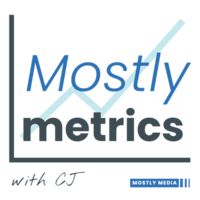
“The year was 1987. Six months after we went public was the market crash of 1987. Our stock halved in a day.
And six months prior, the three founding executives, the CFO included, had taken all their proceeds from the IPO downstairs to – wait for it – Smith Barney and put it all on the market, and the CFO had levered himself up.
So on the day of the market crash, he got three margin calls. So he went home that night, and he lit his house on fire.🔥
So the next day, the CEO came to me and said,
‘Well, Bob's not coming back and the phone's ringing, you need to talk to investors.’
I was 26.”
-Samuel Levinson, Investor Relations expert and Founder of Arbor Advisory
Not much has changed since 1987 —even as algorithms now drive capital flows, most IR playbooks remain stuck in “earnings‑call script” mode. IR is very much a reactionary function, a “check the box exercise”, and a missed opportunity to move the market in your favor.
This tactical deep dive shows you how to turn your IR function into a strategic weapon.
We're going to dive deep, folks, into what it means to run a world-class investor relations function. I'm not talking about running a press release from time to time, or having an earnings day; we're talking about IR as a strategic weapon to drive your valuation. This is based on talking to experts who don't just see IR as messaging, but as an extension of the overall business strategy.
Here are the chapters we’ll cover:
1. Communication Should Reflect Business Strategy
“Your communication strategy must be the public expression of your corporate roadmap.”
2. Know Your Audience
“If I’m a value investor… I’m not here to hear a growth story.”
3. Management Credibility
“Surveys going back 30 years consistently show that “management credibility” is the #1 driver of an institutional investor’s buy/sell decision”
4. The Metrics You Measure
“If you don’t have the metrics, you pound the table. If you do have the metrics, you pound the numbers.”
5. Embedding IR in the Business
“Let’s call a spade a spade if your metrics aren’t linked to the context of the daily activities”
6. Putting IR to Work—Your Next Moves
“Now it’s your turn to go on offense.”
This masterclass in IR is available for paid members below. It’s time to link the way you talk about your business to how the market values and rewards it.
1. Communication Should Reflect Business Strategy
At Arbor Capital, their mantra is simple, but profound:
“Your communication strategy must be the public expression of your corporate roadmap.”
As Sam Levenson explains,
“If your communication strategy isn’t tied to your business strategy, then what effect are you really having? You’re not advancing the business, you’re not creating value for your shareholders, employees, or partners.”
It sounds so basic, yet a lot of companies miss the boat.
Why “Basic” Becomes Broken
All too often, IR teams treat earnings decks, press releases, and roadshow scripts as standalone artifacts—checklists to be completed—rather than living, strategic amplifiers of long‑term goals. The outcome? Disjointed messages that echo last quarter’s slides instead of the multi‑year thesis driving valuation. It’s flat footed and reactionary.
From Theory to Practice
To make IR your strategic amplifier, follow these three steps:
Anchor in Strategy. Begin each IR asset (earnings deck, investor‑day presentation, website narrative) with your top 2–3 strategic objectives. Whether it’s reaching 25% operating margins, launching a usage‑based pricing engine, or entering a new market, every slide and script should reinforce “why this matters.”
Distill Your Narrative. Craft a one‑sentence thesis that encapsulates your vision (e.g., “Scaling our pricing engine to expand margins by 200 bps by Q4”). Use this statement as the opening of every major investor touchpoint.
Embed and Repeat. Build a living “IR narrative playbook” that maps each strategic milestone to specific proof points and reporting dates. Update it quarterly so your story—and your progress—remain in lockstep with investor communications.
Immediate Takeaway
Audit your next IR calendar: For each planned call or presentation, ask yourself:
Does this session reinforce a core strategic objective?
Is the narrative opening tied to our long-term roadmap?
Will we report on a measurable milestone, not just past numbers?
If the answer to any of these is “no,” it’s time to rethink—not just retool—your communication approach.
Subscribe to our premium content to read the rest.
Become a paying subscriber to get access to this post and other subscriber-only content.
UpgradeYour subscription unlocks:
- In-depth “how to” playbooks trusted by the most successful CFOs in the world
- Exclusive access to our private company financial benchmarks
- Support a writer sharing +30,000 hours of on-the-job insights

